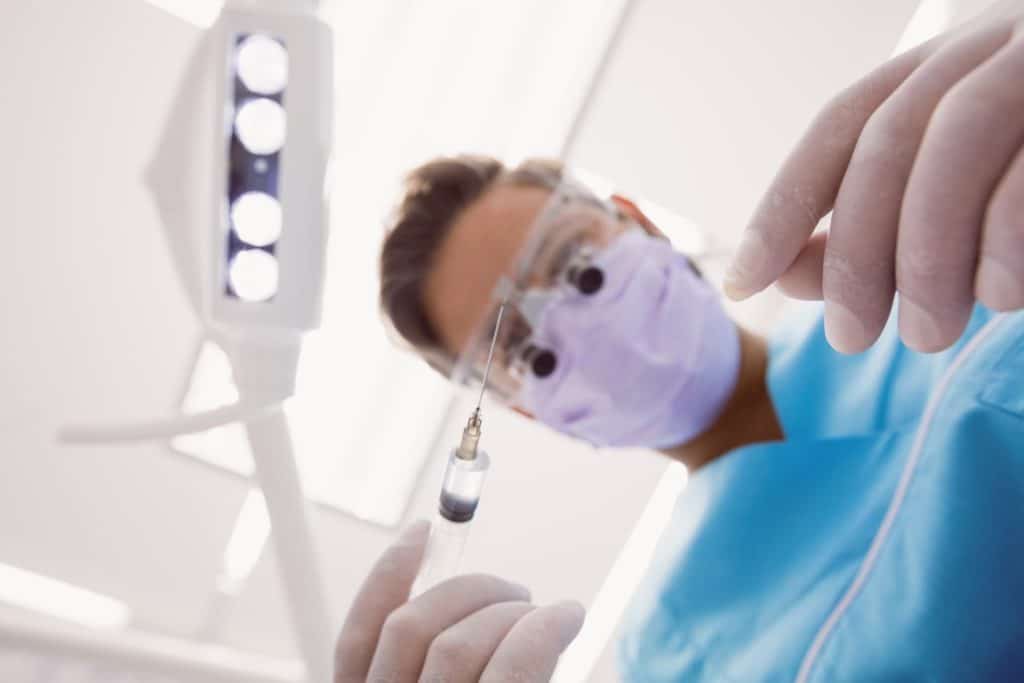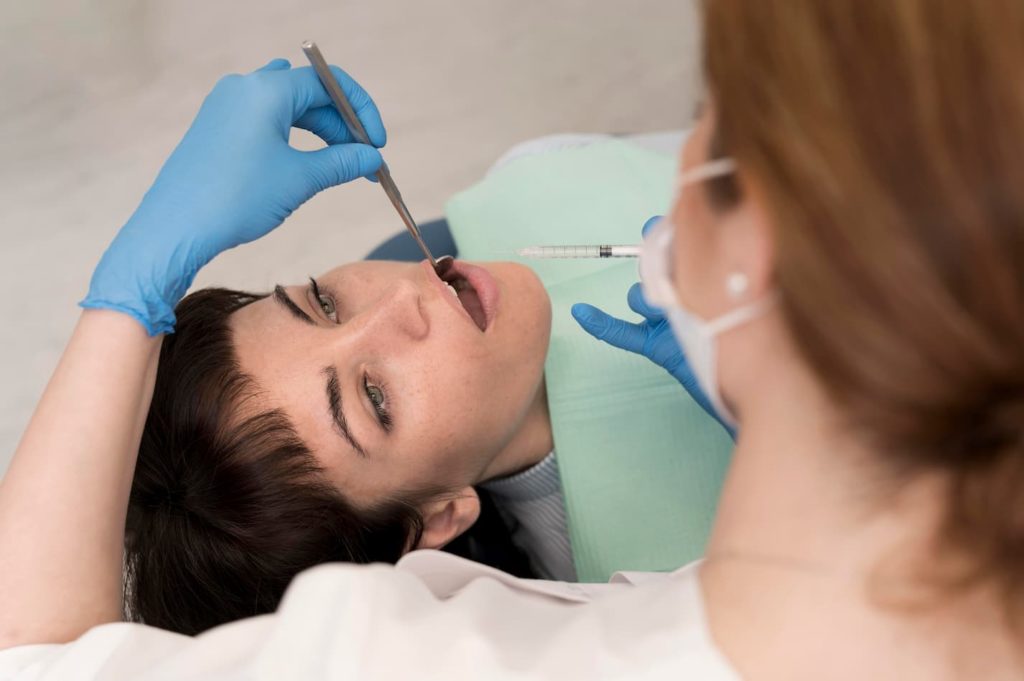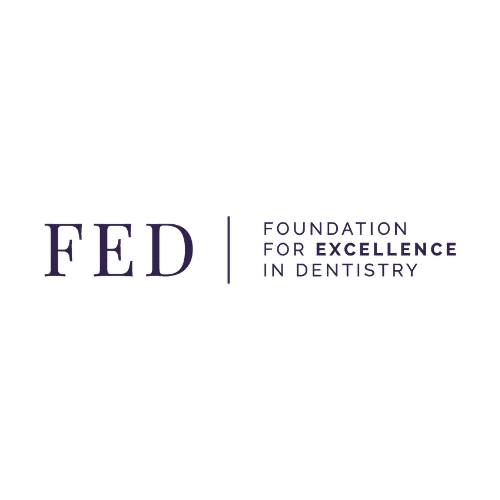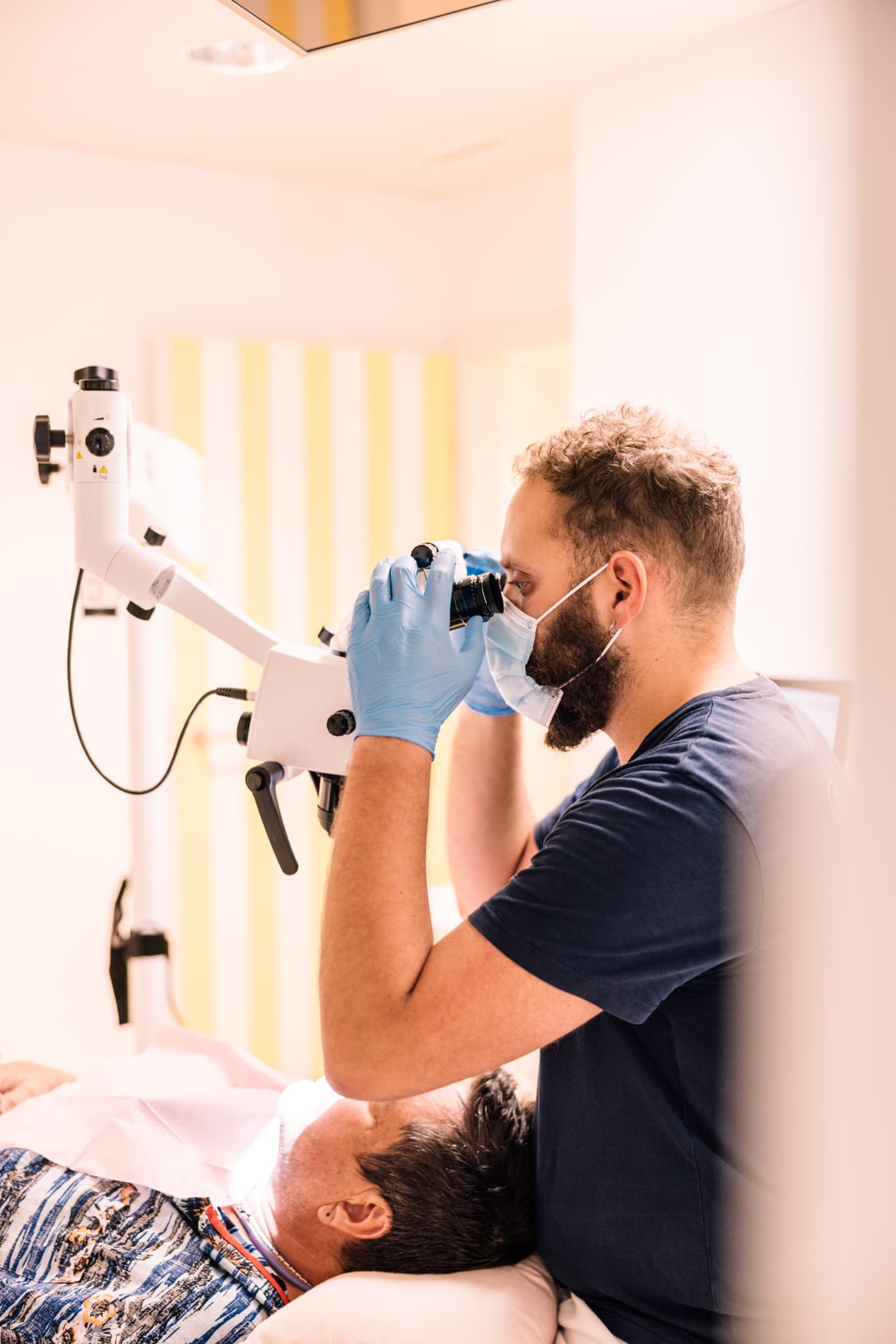Dental Anaesthesia
Techniques, comfort, safety
Patients requiring dental surgery or treatment often anticipate and fear the pain it might cause. However, many solutions now exist to completely eliminate the sensation of dental pain during a surgical procedure. This is the role of dental anaesthesia: to remove all discomfort and reduce anxiety.
Dental anaesthesia at the CHD
At CHD, we understand that dental treatment can be a source of stress. We are committed to finding the type of anaesthesia best suited to your situation and to doing everything possible to make your experience as pleasant as possible.
Discover this treatment in video


Pricing
| Local anaesthesia | upon estimate (generally included in the cost of the treatment) |
| Conscious sedation | (with laughing gas, also known as MEOPA): upon estimate (generally included in the cost of the treatment) |
| General anaesthesia | upon estimate (generally included in the cost of the treatment) |
You have the possibility to pay by invoices and stagger your payments.
Fair & transparent prices
We strive to maintain unbeatable value for money: reasonable prices, which have not changed since 2016, for quality of care that has earned us numerous awards:




Advice
Stress and anxiety can significantly influence your perception of pain on the day of the procedure. Building a relationship of trust between the practitioner and the patient is essential to ensure your comfort and well-being on the day of the operation. Do not hesitate to ask your dentist any questions during the initial consultation before the surgery. Your dentist will be able to answer all your questions and reassure you about the anaesthesia and the procedure.
The effects of anaesthesia fade naturally. The duration varies depending on the type of anaesthesia recommended for your situation.
The practitioner will also provide you with all the necessary post-operative instructions. Generally, a rest period is advised, during which you should limit your activities and adapt your dietary habits. Follow their guidance closely to promote healing and avoid any post-operative complications. Keep in mind that one of the main causes of delayed healing is accidentally biting your numb lip or cheek!
Our dental clinics
Learn more about dental anaesthesia
What are the different types of dental anaesthesia?
There are three main types of dental anaesthesia: local anaesthesia (administered via injection, only in the area where the dentist operates); conscious sedation using laughing gas (its amnesic effect allows the patient to completely relax while remaining conscious); and general anaesthesia (the patient is unconscious for the entire duration of the procedure).
When is dental anaesthesia needed?
Typically, dental anaesthesia is required for surgical procedures such as gum grafting, root canal treatment or the placement of dental implants. It is also used for wisdom tooth extractions, the treatment of a simple dental cavity, or even for deep scaling (such as curettage).
Can you choose your type of dental anaesthesia?
Generally, your dentist will recommend the type of anaesthesia best suited to your situation. They will select the least invasive option (usually local anaesthesia), according to the type and complexity of the dental procedure required.
That said, you can also share any concerns with your dentist. The recommended method may vary depending on your level of anxiety and overall condition. For example, general anaesthesia may be considered if anxiety is too high, even if local anaesthesia would have been appropriate. Age also plays a role, as conscious sedation is often used in paediatric dentistry.
Why doesn’t local anaesthesia always work?
There are three main reasons why local anaesthesia may fail.
The patient’s oral health condition: achieving deep anaesthesia can be more difficult in cases of inflammation, especially if the patient has pulpitis (severe toothache). Certain harmful habits, such as alcohol consumption, smoking, or drug use, can also impact effectiveness. Finally, the patient’s level of stress and anxiety may affect their perception of pain. It is therefore crucial for the practitioner to establish a strong relationship of trust to ensure the procedure goes smoothly. That said, dental anaesthesia is effective in the vast majority of cases, and good communication between dentist and patient is key.
Intraosseous anaesthesia (an injection into the spongy bone) is a technique that helps reduce the risk of failure. It is also particularly well suited for children.
Can you be allergic to anaesthesia?
Allergic reactions to anaesthetic products are extremely rare.
Generally, the information you provide to your dentist about your medical history (for your pre-operative file) helps minimise the risk of allergic reactions. Most often, the allergy is not to the anaesthetic itself, but to certain molecules added to improve fluidity or prolong its effect—though such cases are extremely rare.
Can you breastfeed after dental anaesthesia?
There is no contraindication to continuing to breastfeed after undergoing dental surgery with anaesthesia. However, if you have any concerns, do not hesitate to consult your dentist and gynaecologist.